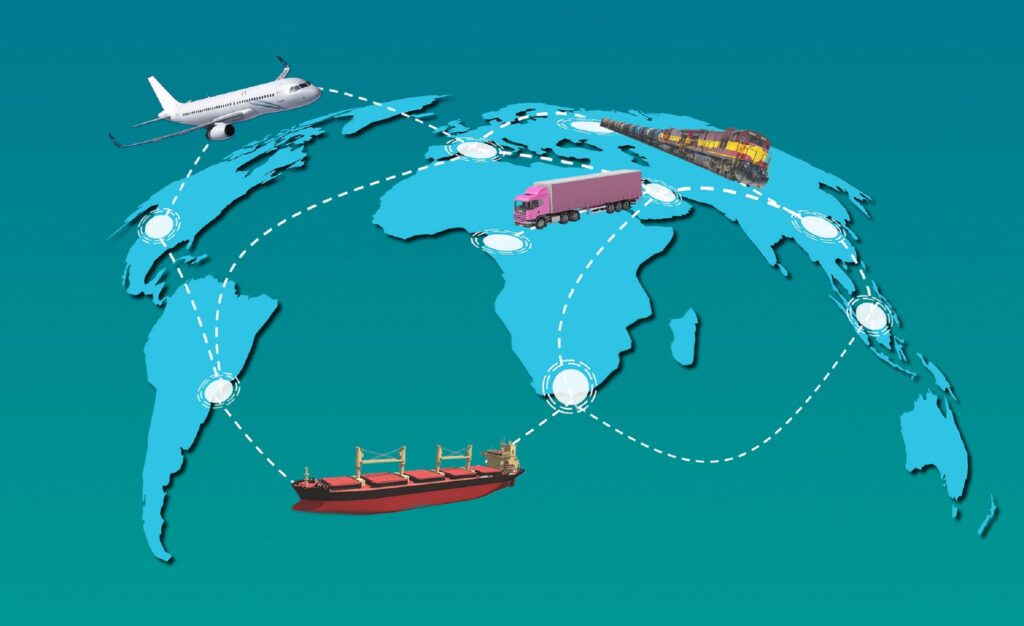Our entire world survives on vast, interconnected supply chains to thrive. Supply chains have played an important role in humanity’s progress;
Everything that you need is right at your arm’s length. Do you know why? You have the stuff you need at home because various supply chains coordinate every step. Without supply chains, this world would not be how it looks today.
Undoubtedly, supply chains have evolved over these decades. We are here to take a look into the latest evolutions.
How did supply chain management come into being?
Supply chains, in the beginning, were local. Most of the things were taken from one place to another by people. Gradually, distinct cultures were developed and supply chains expanded. Nevertheless, supply chains in the pre-modern era were quite complex.
To ease the complexity, people created the first form of writing in the ancient Mesopotamia era to record transactions. When goods moved out of the jurisdiction, it was very important to record the movement, so they came up with recording everything through writing.
Supply Chain Management during the Industrial Revolution
The Industrial revolution brought disruption to the entire supply chain management; supply chains were globalized. While pre-modern logistics were only concerned with moving goods from one place to another, during the industrial revolution a new problem due to the need for mass production. As products started moving out of the country, the demand increased.
Honestly, there were two problems:
- First, the goods needed to be transported through better means to get them to their destinations quickly.
- Second, people were to think beyond transport and plan to sell those exploding varieties to a global market. Customers were to be convinced that the product is worth the money spent. So, we saw a rise in advertising.
The evolution of the supply chain is acknowledged as one of the most important developments in business growth.
The Pre-Modern Era
After the industrial revolution, many things changed. In 1925, people developed pallets to make warehousing more efficient, more products were shipped, and things got a little easier. During the second world war, America became the leader in supply chain management. The country is still known for two breathtaking developments in the supply chain – the Interstate Highway System and standardized shipping containers; we rely on both of these today as well.
Due to these developments, for the first time in history, huge volumes of goods could be bought from any country in the world. The systems turned out to be useful and cost-efficient.
Modern Supply Chain Concoction
With the advent of innovative communication and information technologies, everything was integrated into a supply chain management system. From control of information, finance, and flow of goods to making plans for a new range of products and systems, everything became streamlined.
Today, we see a growing level of automation in supply chain management, and it has been a predominant element in the evolution of both physical distribution and materials management. This digitization is noticeable in full-fledged distribution centers experiencing a significant push towards automated storage, handling materials, and packaging.
Read More: How to Drive Engagement and Fuel Sales with NFTs with These Best Practices in 2023
As the world is pushing itself towards more and more automation, here are some top supply chain technology trends & innovations to watch out for.
1. Internet of Things
- All physical devices used in supply chain management are linked to the Internet of Things to monitor and transfer data without human involvement.
- The use of IoT in logistics brings more efficiency.
2. Artificial Intelligence
- AI is a major force behind supply chain automation.
- AI algorithm with machine learning enables a business to forecast any unforeseen circumstances in the supply chain.
- Real-time reporting, enhanced intelligence, and interactive data visualization are some benefits of AI in supply chain.
3. Warehouse Automation
- Warehouse automation leads to automating repetitive tasks and manual data input, which in turn, saves time.
- Warehouse automation reduces human errors and the cost associated with those errors.
4. Robotics
- Robots, bots, and drones are not new to us. Today, robots and drones deliver products from one place to another.
- Robotic process automation works in tandem with humans and ensures seamless operations round-the-clock.
5. Strengthened Relationships
- Technology is crucial, but humans wield the entire chain in their hands. Automation is necessary, but companies will ensure that they maintain good human relationships as well.
- With better force at work, companies can easily control their supply chain and be ready for unforeseen circumstances.
Wrapping up
Disruptions in the supply chain will continue to happen. The biggest challenge this industry faces is the cost of goods and shipping. We cannot deny that shipping costs in some industries have increased up to 600%. However, it is predicted that things will improve gradually.





















